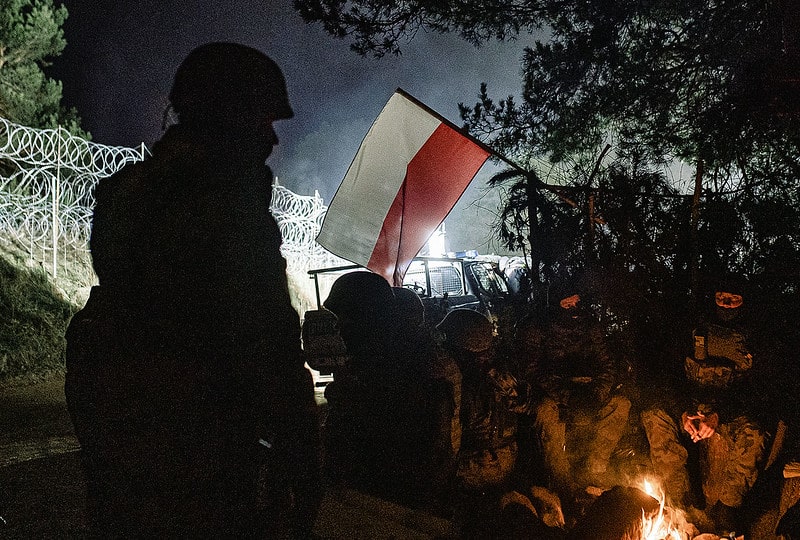Polish forces have used tear gas and water cannons against migrants trying to cross into the country from Belarus. Videos showed migrants throwing stones and other objects at the Polish forces guarding the border crossing, a move that was met with a harsh reaction from the Polish forces. Poland’s defense ministry has declared that its forces responded to migrants attacking a border fence at Kuznica. “The migrants attacked our soldiers and officers with stones and are trying to destroy the fence and get to Poland. Our services used tear gas to quell to migrants’ aggression,” the ministry tweeted.
Hundreds, if not thousands of migrants, mostly from the Middle-East, huddle on the border between Belarus and Poland in the hope of crossing over to Poland, and thereby the EU. Polish military forces are stationed at the now fortified border in order to stop the migrants crossing.
State of emergency
As the situation at the Polish-Belarus border intensifies, the area around the Polish border has been subjected to a state of emergency. Besides a few humanitarian workers, no one is allowed in, including journalists. On the Belarussian side, Lukashenko is also reluctant to allow independent observation, though some journalists have been permitted to enter the area. Because of this, it is hard to obtain trustworthy information from the border, though the little information that does come out paints a bleak picture for the migrants stationed there. Migrants are huddled at the border in increasingly cold weather conditions, with little food or medical services at their disposal. A number of the migrants have reportedly already died under the conditions.
EU and immigration
EU-Belarus relations have been severely strained since Belarus’s President Lukashenko declared victory in allegedly fraudulent presidential elections last year, while cracking down hard on dissent and protestors. As a reaction, the EU imposed sanctions on Belarus. However, Belarus has come back hard on the EU by flying migrants from the MENA-area to the EU border in an effort to destabilize EU with a new immigration crisis.
The large number of migrants arriving in the EU in 2015 has shown that the EU is by no means a unified authority when it comes to dealing with migration. While in the Southern countries more and more refugees arrived, the EU as a whole could not agree on a common strategy. This led to huge refugee camps in the South of the EU: many more refugees were gathered in those camps than were originally intended, leading to scarcity of space and essential resources.
Belarussian president Lukashenko is now using this immigration struggle to put pressure on the EU and increase divisions, in order to undo the sanctions imposed after the elections this summer. However, the crisis has now led the EU to prepare fresh sanctions on Belarus. Both parties blame the other for manufacturing the crisis, using migrants as political cannon fodder, and, through this, putting the lives of the migrants at risk.
An uncertain future
Though there are fears that the crisis could last a long time, there are signs that the tensions could be dialled down soon. The flow of migrants is slowing as airlines either halt flights to the Belarussian capital or ban Iraqi and Syrian passengers. The question remains how long this crisis will last, and what will happen to the migrants still trapped in the border area.
Sources: BBC, BBC2, CNN, NYTimes
Photo: Flickr



